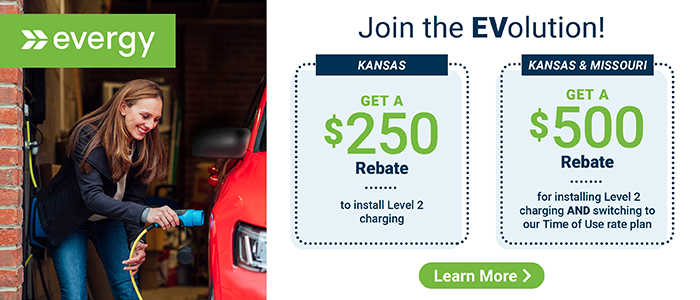Clean water is a precious and vital resource for life. With only one percent of water on Earth deemed usable, it becomes more urgent to protect the clean water we have and use only what we need.
An Environmental Protection Agency (EPA) survey reports that 40 to 50 states predict water shortages in the next 10 years.
Conserving water and keeping waterways clean benefits everyone by reducing the energy needed to treat water, reducing water contamination from polluted runoff, preserving wetlands that naturally clean water and reducing the need for additional water treatment facilities. The added benefits for residents include lower water and sewer bills and assured access to clean water.
Here are eight tips and incentives for reducing your water use and eliminating pollutants you inadvertently put into the water system.
1. Update water fixtures
Use less water by installing aerators on all household faucets and low-flow showerheads in the bathrooms and save 2,300 to 7,000 gallons of water per year. A low-flow (1.28 gallons per flush) WaterSense-labeled toilet could save a family of four more than $90 a year compared to older models that use five gallons or more per flush. If your toilet has been around since the 1980s or longer, it could use up to seven gallons per flush. According to the Natural Resources Defense Council, 73 percent of the water used at home is either flushed down the toilet or washed down the shower drain.
2. Change your habits
The EPA estimates the average household of four uses up to 400 gallons of fresh water each day and spends as much as $500 per year on water and sewer bills. A change in personal habits can lower that number. Start by taking short showers instead of baths. It takes about 30 gallons of water to fill the average tub, compared to 15 gallons of water for a five-minute shower. A teenager in the family can skew this savings, with the average shower lasting 45 minutes (or until the hot water runs out). Turn off the faucet when washing your hands or brushing your teeth (saving 3,000 gallons a year). When shaving, fill the sink with water to rinse a razor, instead of letting the water run.
3. Make a mechanical fix
That annoying leaking or running toilet can waste as much as 200 gallons of water per day. An easy way to check for leakage is to put a few drops of food coloring in the toilet tank. If the color begins to appear in the bowl without flushing, then the toilet is leaking and it is time for a repairman or replacement. Often, the labor charge is the same for toilet repair and toilet replacement, so consider a leak as inducement to purchase a newer, more efficient toilet.
4. Turn it off outside
A lawn and garden can consume up to 70 percent of a household water bill during warm summer months. But there are ways to drastically reduce this usage. Start by planting native varieties of vines, grasses, flowers, bushes and trees. This will eliminate the need for chemical fertilizing, which will reduce the contamination of water runoff from rain into the sewer system or water table. After they are established in the garden, natives should rarely require additional watering. Use generous amounts of compost and mulch in all garden beds to retain moisture, reducing the need for watering. Use soaker hoses or drip irrigation systems, which are 20 percent more efficient than sprinklers. Apply water early in the morning to minimize evaporation.
5. Rein in your rainwater
Capturing rainwater in a rain barrel is one of the easiest, most satisfying ways to save water and provide your garden with a chlorine-free drink. A one-inch rain can provide 600 gallons of water runoff from a 1,000-square-foot roof. That’s enough to fill more than 10 rain barrels.
6. Redirect it
Reduce the amount of water that your property contributes to the sewer system and increase groundwater absorption by decreasing the amount of impervious surfaces around your home. Having fewer hard surfaces of concrete and asphalt will improve drainage around your home and in your yard. Landscape with vegetation, gravel or other porous materials instead of cement. Install wood decking instead of concrete, and interlocking bricks and paver stones for walkways. Redirect rain gutters and downspouts to soil, grass, rain gardens, rain barrels or gravel areas.
7. Clean up a stream
Everyday household activities are a major contributor to polluted runoff, which is among the most serious sources of water contamination. When it rains, fertilizer from lawns, oil from driveways, paint and solvent residues from walls and decks, litter and pet waste are all washed into storm sewers or nearby lakes, rivers and streams — the same lakes, rivers and streams we rely on for drinking, bathing, swimming and fishing. Residents can keep our waterways clean by joining the Stream Team to test water, monitor streams and pick up litter along waterways. Contact these organizations for stream cleanups and other water conservation information:
To report potential sources of stormwater pollution, contact the Stormwater Hotline in Johnson County, KS at 913-715-6969 or call 311 to make a report in Kansas City, MO.
8. Don’t let toxins go down the drain
Everything that runs down the drain ends up in our water system. So, don’t flush prescription drugs or harsh chemicals. Recycle used motor oil. Avoid pouring waste oil into gutters or down storm drains, and resist the temptation to dump waste onto the ground. According to the Natural Resources Defense Council, a single quart of motor oil that seeps into groundwater can pollute 250,000 gallons of drinking water. When you buy motor oil, ask if the store or service station has a program to buy back waste oil and dispose of it properly. Or dispose of oil, chemicals and paint at recycling centers offered by many local municipalities. Look at www.recyclespot.org for the closest recycling location.





